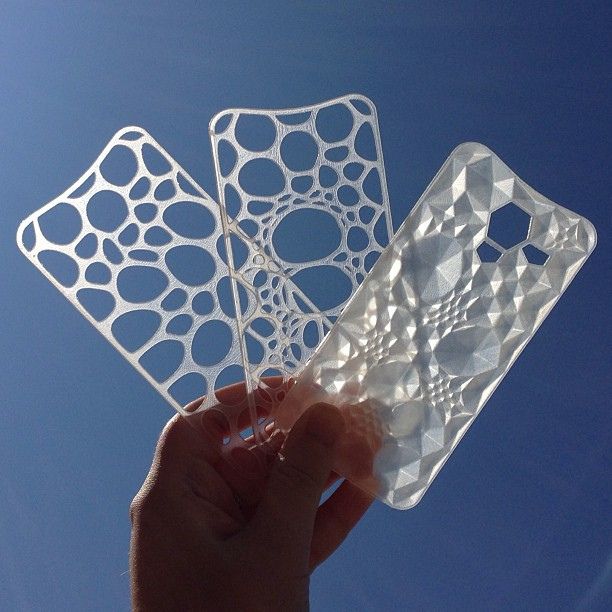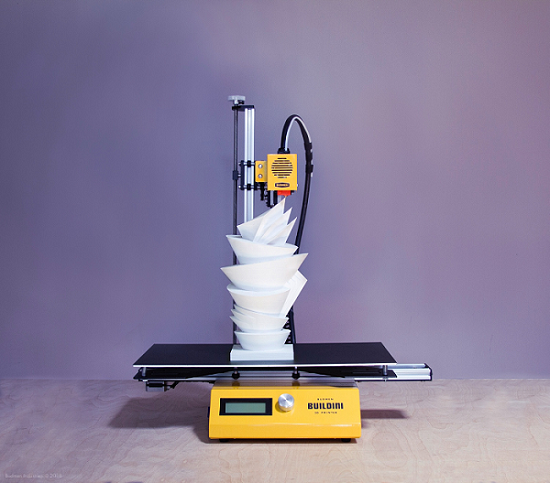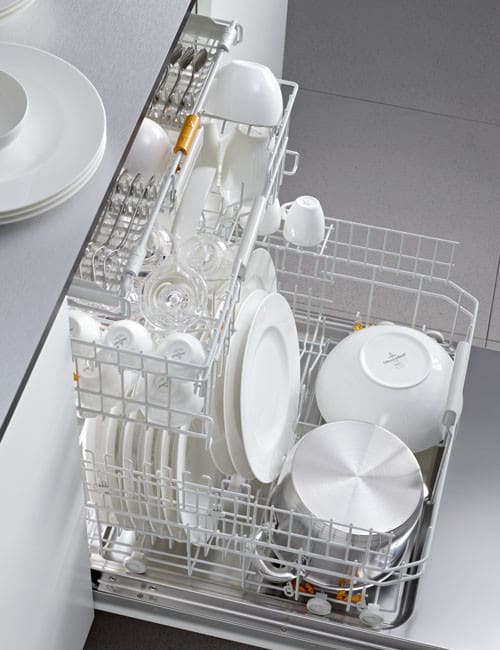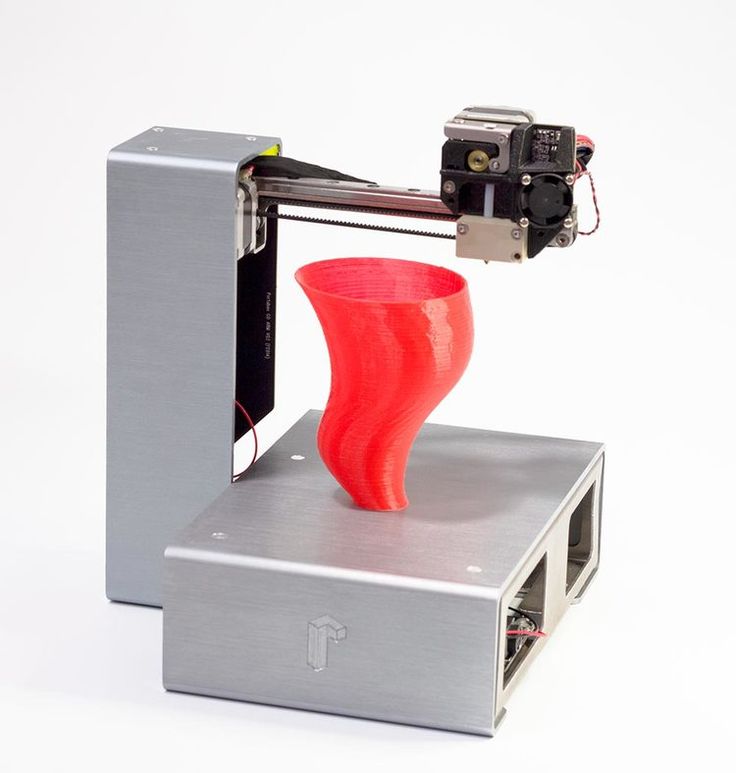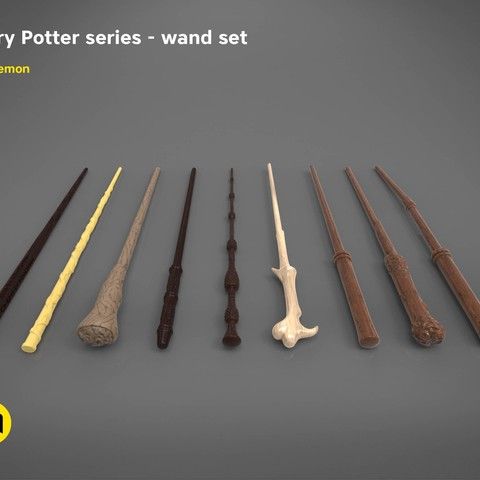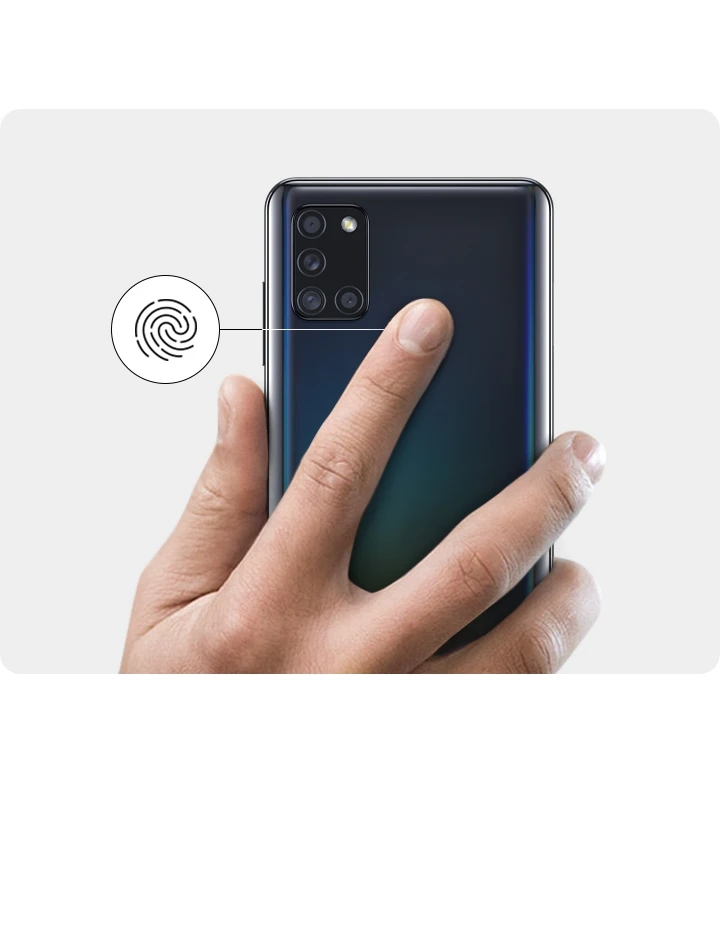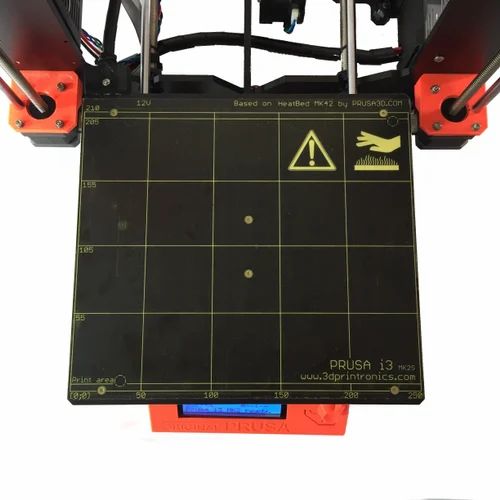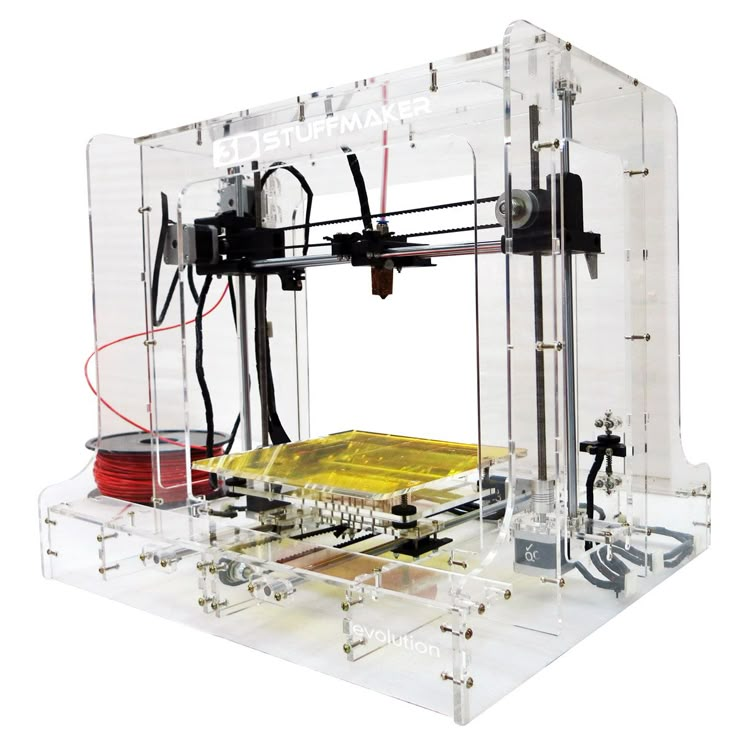Best 3d print software for beginners
Top 11 Best 3D Software For Beginners
Published on September 11, 2020 by Alexandrea P.
3D printing may seem difficult if you are a complete beginner with no experience, especially when it comes to using 3D software. This can cause people to give up before creating their finished STL files. To help you overcome this challenge and achieve your 3D printing goals, we created the following Top 11 3D software for beginners listing. These 3D software will help you design the 3D model of your choice, which you can then use to print your final piece on your FDM or SLA 3D printer at home! These 3D software may not always include a slicer or repair tool in them, so if you are looking for software specifically to slice or repair your file, we also have you covered!
1. Morphi
Developed by a New York startup, Morphi is a 3D software app that was specifically designed for use on tablets. The app allows you to create 3D models in a simple way and contains a complete library with a large number of decorative and functional models. While the application itself is free, you will have to pay to open specific 3D models and application tools. If you are interested in using this version in schools, there exists another version just for this, the Morphi Edu, which is priced at $4.99 for 20 downloads. You can find more information HERE.
2. BlocksCAD
This 3D software was specifically created for educational purposes, its development is done so that anyone can later use OpenSCAD, a more professional CAD software. The commands for the development of the objects and their transformations are represented by colour blocks, reminiscent of the well-known construction toys, LEGO. BlocksCAD’s code is fully compatible with OpenSCAD’s so you can give your models the last touch up on there. Export formats can be OpenSCAD or STL. To make sure that anyone can learn to use the software, BlocksCAD has a Youtube channel with different tutorials on 3D modeling and costs $149 a year. Find more information HERE.
3.
 Leopoly
LeopolyLeopoly is a cloud-based 3D modeling software that was developed by the Hungarian startup, LeoPoly. Both simple and easy to use, it offers different options when modeling an object, such as a library of available objects that can be customised in terms of color and text, and the user can also choose the model from a gallery of files created by other users. This 3D software is mostly aimed at brands, designers, developers, students & consumers that are beginners in 3D modeling. You can find more information HERE.
4. 3D Slash
3DSlash was created in 2013 by Silvain Huet, who was inspired by his son playing the video game Minecraft, a game where you have to survive in a world set up with little squares. 3Dslash, like Minecraft, uses the power of little blocks that you can either delete or use to help create your 3D model. The software offers different tools to help shape your designs, including the possibility to transform parts from reality to 3D with just a picture that you simply upload and trace. With a resolution of up to 0.1 mm, this program will help make your object fairly accurately, enabling you to bring your creative realities to life! You can find more information HERE.
With a resolution of up to 0.1 mm, this program will help make your object fairly accurately, enabling you to bring your creative realities to life! You can find more information HERE.
5. TinkerCAD
This is a free online 3D modeling software from Autodesk, it is geared towards complete beginners. The software features an intuitive block-building concept, allowing you to develop models from a set of basic shapes. The online software comes with a library of millions of files that users can use to find shapes that suit them best and manipulate them as they wish. It also has a direct interaction with third party printing services. It’s a quite simplistic program and will have limitations for some designs. However, it is aimed mostly at people with no experience whatsoever with 3D modeling for 3D printing. Find more information HERE.
6. Clara.io
Clara.io, released by Exocortex, is a full-featured cloud-based 3D modeling, animation and rendering software that runs in your web browser. This cloud-based 3D modeling solution enables to make complex 3D models, create beautiful photorealistic renderings, and share them without installing any software programs. The learning curve is not too steep, which makes it suitable for users that do not have much experience with 3D modeling. On this software, 3D geometries are made up of different elements, known as components. The three different components are Faces, Edges and Vertices. On the Clara.io website, you will find the resources necessary to learn more about how to model on this software.
This cloud-based 3D modeling solution enables to make complex 3D models, create beautiful photorealistic renderings, and share them without installing any software programs. The learning curve is not too steep, which makes it suitable for users that do not have much experience with 3D modeling. On this software, 3D geometries are made up of different elements, known as components. The three different components are Faces, Edges and Vertices. On the Clara.io website, you will find the resources necessary to learn more about how to model on this software.
7. SketchUp Make
Sketchup Make (formerly known as SketchUp) was designed in 2000 by LastSoftware for use in architectural design, it is now owned by Trimble Navigation LLC. The Sketchup program is free and offers simple tools for a wide spectrum of users: makers, architects, designers, engineers and builders. This program allows you to sketch up your ideas easily into a 3D model. Before starting your creation, you can select a template that will guide you throughout the modeling process. It is a very versatile 3D software, that maintains a good balance between usability and functionality, a good option for beginners that are serious about learning CAD. You can find more information HERE.
It is a very versatile 3D software, that maintains a good balance between usability and functionality, a good option for beginners that are serious about learning CAD. You can find more information HERE.
8. Sculptris
Sculptris uses digital sculpting as the basis to create a 3D model. In other words, you will be able to create your 3D models from shaping any mesh with different brush strokes. Creating your model will be similar to shaping an object using modeling clay. This software starts as a sphere, then the user can then model as they wish by stretching, digging, smoothing, etc. This makes it an ideal tool when creating animated characters or video games. Sculptris belongs to Pixologic, the creator of Zbrush. While this is a good beginner 3D software, it is no longer in development, you can still download it but it might not be compatible with new operating systems.You can find more information HERE.
9. Moment of Inspiration (MoI)
MoI is a software that is available for both Windows and Mac, and is particularly useful because the user interface has been made very intuitive.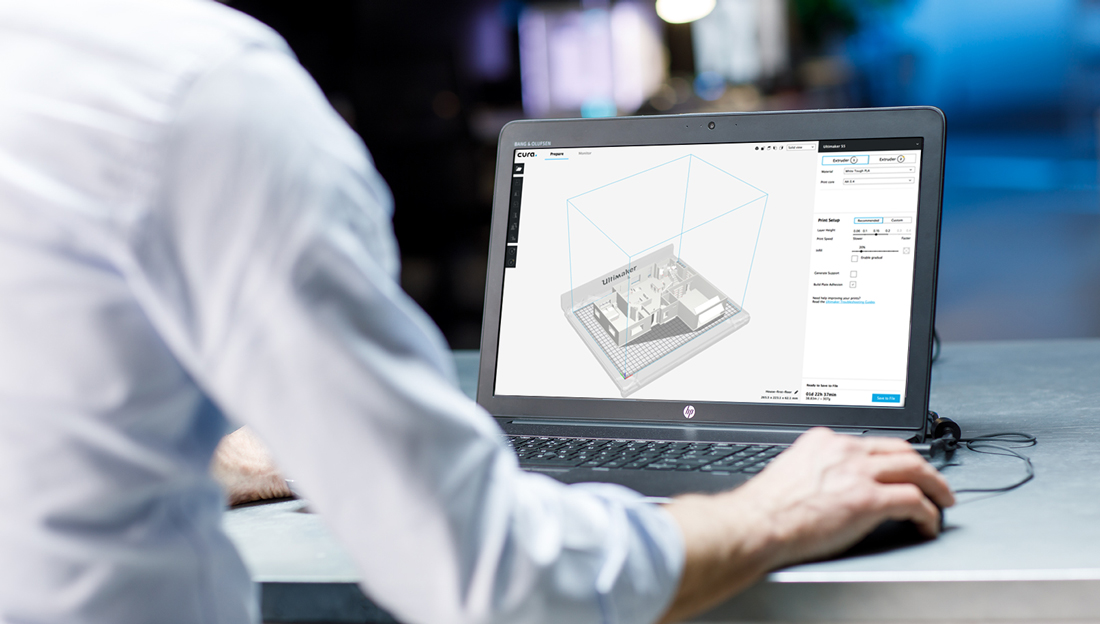 Therefore, it is a suitable 3D modeling software for beginners or anyone frustrated with the complexity of existing CAD tools. Most users are either designers or artists but the software’s advanced boolean functions enable the creation of mechanical models too. The licence costs $295.
Therefore, it is a suitable 3D modeling software for beginners or anyone frustrated with the complexity of existing CAD tools. Most users are either designers or artists but the software’s advanced boolean functions enable the creation of mechanical models too. The licence costs $295.
10. Vectary
Vectary is an online 3D modeling tool with which you can create, share and customise 3D designs. Vectary is a combination of standard mesh modeling, subdivision modeling and parametric plugins. It was built from scratch to make 3D modeling easy-to-use for beginners (but can also be useful to pros). Models are saved in the cloud, where they are accessible through any modern browser, users can access their creations very easily and share their models from anywhere in the world. You can find more information HERE.
11. Meshmixer
The Meshmixer software is a free CAD software part of the Autodesk software family. The Meshmixer is not a typical CAD software, as it does not allow you to create your product from the beginning.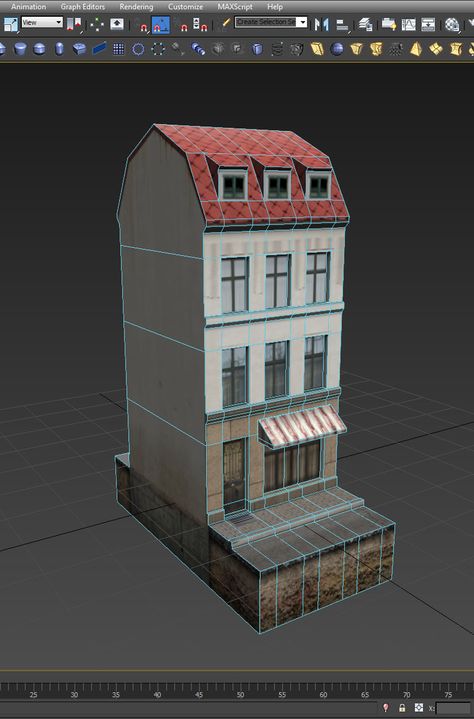 Instead, this software will help you with animation, modeling, zippering, hole filling, hollowing, 3D surface stamping, and auto repair of pre-existing models that you modify to make your own. You can find more information HERE.
Instead, this software will help you with animation, modeling, zippering, hole filling, hollowing, 3D surface stamping, and auto repair of pre-existing models that you modify to make your own. You can find more information HERE.
Do you still need help choosing your 3D software? You can find our expert advice about choosing a 3D modeling software HERE. Let us know in a comment below or on our Facebook and Twitter pages if the listing above was useful! Don’t forget to sign up for our free weekly Newsletter, with all the latest news in 3D printing delivered straight to your inbox!
10 Best 3D Printing Software for Beginners
3D printing continues to make inroads into the hobbyist market as well as in the manufacturing domain. Product fabricators, medical experts, and construction engineers alike are now seeing the utility and convenience of this manufacturing method.
3D printers outwardly appear to be standalone devices. However, this is not so. Software programs control the printing hardware and mesh the parts of the build process together.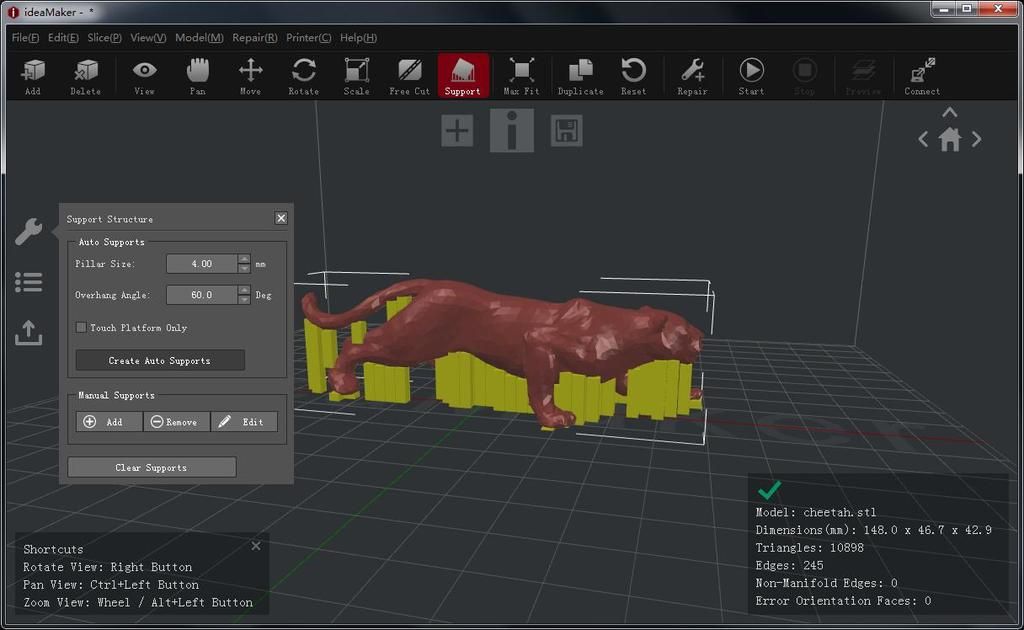 They help the designer create the digital models of the pieces to be printed, then assist in determining the printing strategy. Finally, they send the printer the specific instructions it needs to carry out each step of the printing process.
They help the designer create the digital models of the pieces to be printed, then assist in determining the printing strategy. Finally, they send the printer the specific instructions it needs to carry out each step of the printing process.
The best 3D printing software programs currently on the market are Tinkercad, Blender, and SketchUp. This article will discuss those three programs and more as part of this review of 10 of the best 3D modeling software programs for beginners, and how they work.
1. Tinkercad
Tinkercad was created by a renowned software company, Autodesk. This 3D modeling program provides the ability to manipulate shapes found in a library of files. Models are built by piecing together these basic shapes. Tinkercad also allows for scaling and rotation of these geometrical building blocks, as well as the option of making them hollow or solid. Beginners and young users alike will find this software quite helpful because of the simple nature of the user interface.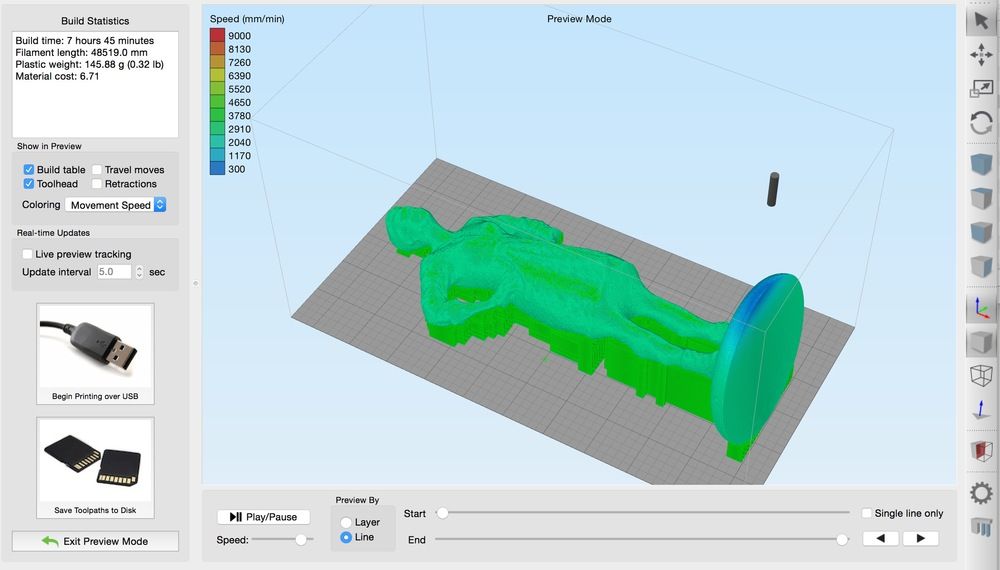 The program is completely free and accessible to anyone. Entry-level students and people with no prior experience in handling 3D printing software should strongly consider Tinkercad.
The program is completely free and accessible to anyone. Entry-level students and people with no prior experience in handling 3D printing software should strongly consider Tinkercad.
2. Blender
Blender is a 3D design software package with quite a range of applications. Due to the versatility of this application, not only can one create 3D models, but also video games, and visual effects (VFX) in movies. Blender possesses a feature called a 3D printing toolbox. This enables a user to analyze a mesh to see if there are any errors that could potentially cause the printing process to fail. With the toolbox, the geometry of the overhangs can be checked for accuracy. Moreover, it works on Windows, macOS, and Linux operating systems. Blender is great for sculpting and mesh modeling. It is a completely free and open-source software program. Though Blender has a lot of beginner resources, it is designed for use by professionals.
3. SketchUp Free
Sketchup is a 3D software program used for the creation of architectural designs.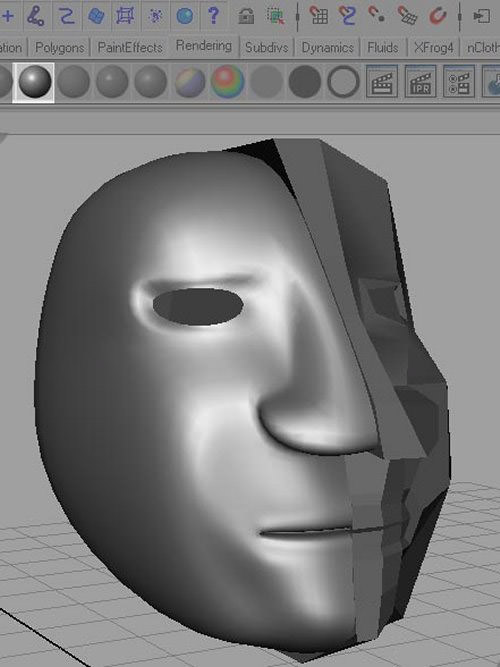 It also allows for the visualization of large types of machinery and their various parts. Its specialty is direct modeling, which is creating geometry rather than features. SketchUp has both a free and a paid version. The free version is quite helpful but it comes with limited features including its compatibility with only STL, SKP, and PNG file formats. It is good for personal use but may not be a good option in an organizational setting. The paid version comes with three offers: SketchUp Shop ($119/year), SketchUp Pro ($299/year), and SketchUp Studio ($699/year). SketchUp is a 3D modeling software for beginners who want to improve their design skills.
It also allows for the visualization of large types of machinery and their various parts. Its specialty is direct modeling, which is creating geometry rather than features. SketchUp has both a free and a paid version. The free version is quite helpful but it comes with limited features including its compatibility with only STL, SKP, and PNG file formats. It is good for personal use but may not be a good option in an organizational setting. The paid version comes with three offers: SketchUp Shop ($119/year), SketchUp Pro ($299/year), and SketchUp Studio ($699/year). SketchUp is a 3D modeling software for beginners who want to improve their design skills.
4. Meshmixer
Another 3D modeling software program for beginners is Meshmixer, from Autodesk. Unlike other conventional programs, Meshmixer does not allow one to build 3D models from scratch. Nevertheless, it is handy for repairing, hollowing, and filling pre-existing models. Meshmixer is used for direct modeling, optimization, and sculpting.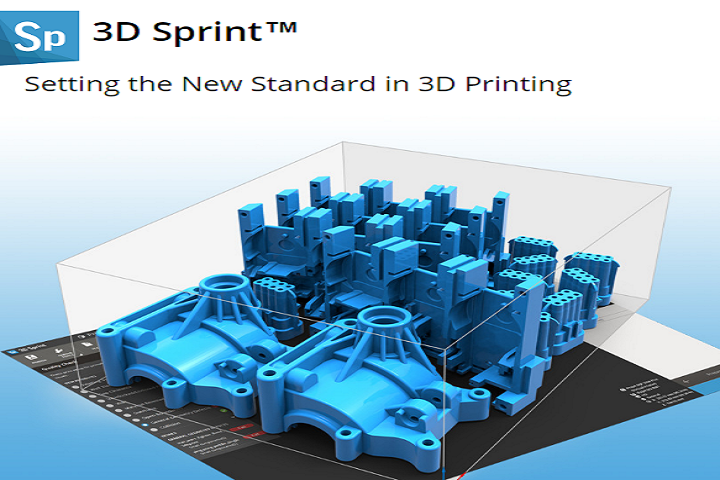 This free 3D design software program is good for both beginners and professionals.
This free 3D design software program is good for both beginners and professionals.
5. SculptGL
SculptGL is the widely used sculpting software. It is browser-based and allows one to mold a lump of “digital clay” into any desired shape. SculptGL is also a free and open-source 3D modeling program. It is user-friendly and quite accessible. Maximize the benefits of the software as a beginner by understanding the basic commands and 3D modeling techniques.
6. Vectary
Vectary is online software that supports both 2D and 3D modeling. It has software modules for subdivision modeling, parametric plugin, and mesh modeling. This easy-to-use 3D drawing app has proven useful to both beginners and professionals. It is also used for product design, games, and graphic design. A $12 monthly subscription is needed to access the complete set of software functions. Vectary is best used for parametric and mesh modeling.
7. Wings 3D
Wings 3D, a 3D modeling software program for beginners, is a subdivision modeler with advanced options.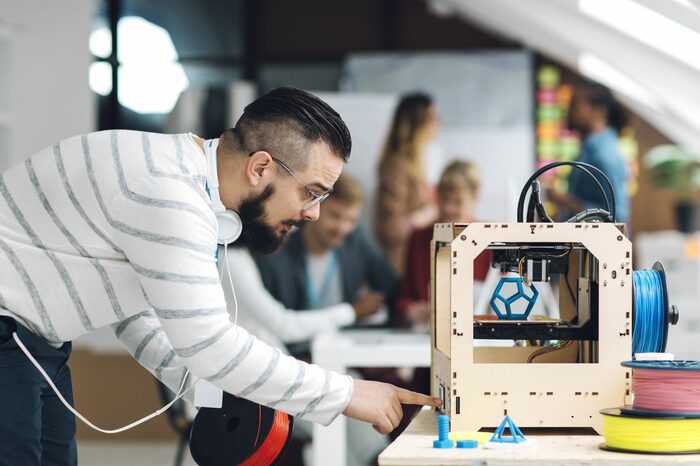 Although the tools are advanced, beginners can navigate their way through them. For example, a feature called "AutoUV" enables a user to map or drag and drop images on a 3D model. Wings 3D is a free and open-source modeling program. It is best for those looking for a wide array of tools with a user-friendly interface, whether beginners or professionals.
Although the tools are advanced, beginners can navigate their way through them. For example, a feature called "AutoUV" enables a user to map or drag and drop images on a 3D model. Wings 3D is a free and open-source modeling program. It is best for those looking for a wide array of tools with a user-friendly interface, whether beginners or professionals.
8. BlocksCAD
BlocksCAD, a 3D model builder, is a simplified version of openSCAD. In BlocksCAD, model scripts are created by stacking together colorful bricks. It is ideal for kids, as its LEGO-like approach to scripting makes learning easier. Beginners will find the colorful interface quite appealing. This web-based app is completely free and is good for beginners who want to make designs based on openSCAD scripting.
9. Leopoly
Leopoly is a software program that offers 3D printing, customization, and sculpting of 3D models. It is quite handy if a user has no means of printing the created model. This is because Leopoly models can be created and sent to a 3D printing service bureau. It is a free 3D software program and is perfect for students and beginners looking to sculpt 3D models.
It is a free 3D software program and is perfect for students and beginners looking to sculpt 3D models.
10. ZBrushCoreMini
ZBrushCoreMini is a simplified version of Pixologic's ZBrush, an advanced sculpting program used by professionals. It comes with a selection of eight basic brushes for smoothening, polishing, pinching, inflating, and more for the 3D Modeler to apply. ZBrushCoreMini is completely free and good for beginners who want to learn and understand digital sculpting.
What Is 3D Printing Software?
A 3D printing software is used to build, slice, and prepare 3D models for creation using a 3D printer. For modeling software programs that do not come with slicer capabilities, a slicer software application such as Fusion Autodesk 360 may be used. A slicer transforms the model built with the CAD software into a form that the 3D printer can understand and process.
For more information, see our guide on 3D Printing.
What Is the Most Widely Used 3D Printing Software?
The most widely used 3D printing software is Autodesk Fusion 360. It Is a great tool aimed at professionals for designing and manufacturing products. Inexperienced designers can start out with Tinkercad (another software from Autodesk) before transitioning to Fusion 360. Fusion 360 possesses capabilities that distinguish it from other software including generative design, sculpting tools, computer-aided manufacturing (CAM), and 3D printing.
It Is a great tool aimed at professionals for designing and manufacturing products. Inexperienced designers can start out with Tinkercad (another software from Autodesk) before transitioning to Fusion 360. Fusion 360 possesses capabilities that distinguish it from other software including generative design, sculpting tools, computer-aided manufacturing (CAM), and 3D printing.
How To Use 3D Printing Software
The steps in using 3D printing software depend on the program used. Most brands will have an instruction guide to get you started. In general, the steps are:
- Use CAD software to create a digital model.
- Use slicer software to break the model into a series of instructions that the printer can process.
How Does 3D Printing Software Work?
A 3D printing software works by using CAD software first to create the digital model of a part or object that is to be printed. Then, a slicer software is used to break down this model into a succession of slices.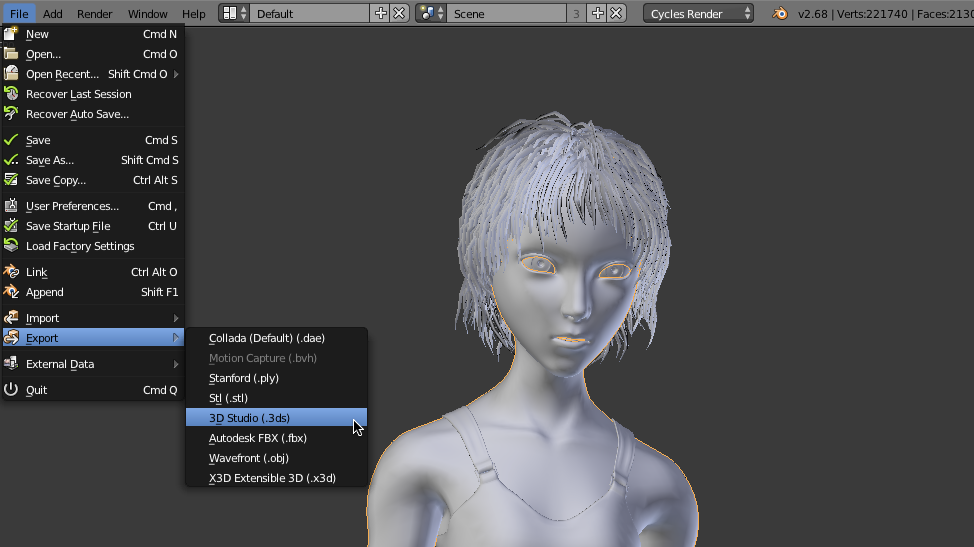 Without the slicer, the 3D printer will be unable to interpret the 3D model. The last step is the actual printing of the desired object. The data generated by the slicer program are sent to the printer as step-by-step instructions in G-code, and the part is then printed according to these machine instructions.
Without the slicer, the 3D printer will be unable to interpret the 3D model. The last step is the actual printing of the desired object. The data generated by the slicer program are sent to the printer as step-by-step instructions in G-code, and the part is then printed according to these machine instructions.
What Makes 3D Printing Software the Best?
Since 3D printing software is a fundamental component in making 3D printing a reality, no 3D printing user can do without it. When choosing a 3D printing software, the factors that make a 3D printing software program the best depend on its ease of use and the available features that cater to a user’s needs. Some of the important features are build preparation, good management of the manufacturing processes, and work order creation.
For more information, see our guide on the Best 3D Printing Software.
Is There Free 3D Printing Software?
Yes, there are several free 3D printing programs including Tinkercad, SculptGL, and Meshmixer. Several of these platforms are open source. Beginners and intermediate-level users alike looking to hone their modeling skills will find these to be very useful applications.
Several of these platforms are open source. Beginners and intermediate-level users alike looking to hone their modeling skills will find these to be very useful applications.
Summary
The article presented and discussed ten (10) of the best 3D printing software applications for beginners. To learn more about 3D printing software for beginners in the 3D printing business and determine which one would work best for you, contact a Xometry representative.
Xometry provides a wide range of manufacturing capabilities, including 3D printing and other value-added services for all of your prototyping and production needs. Visit our website to learn more or to request a free, no-obligation quote.
Disclaimer
The content appearing on this webpage is for informational purposes only. Xometry makes no representation or warranty of any kind, be it expressed or implied, as to the accuracy, completeness, or validity of the information. Any performance parameters, geometric tolerances, specific design features, quality and types of materials, or processes should not be inferred to represent what will be delivered by third-party suppliers or manufacturers through Xometry’s network.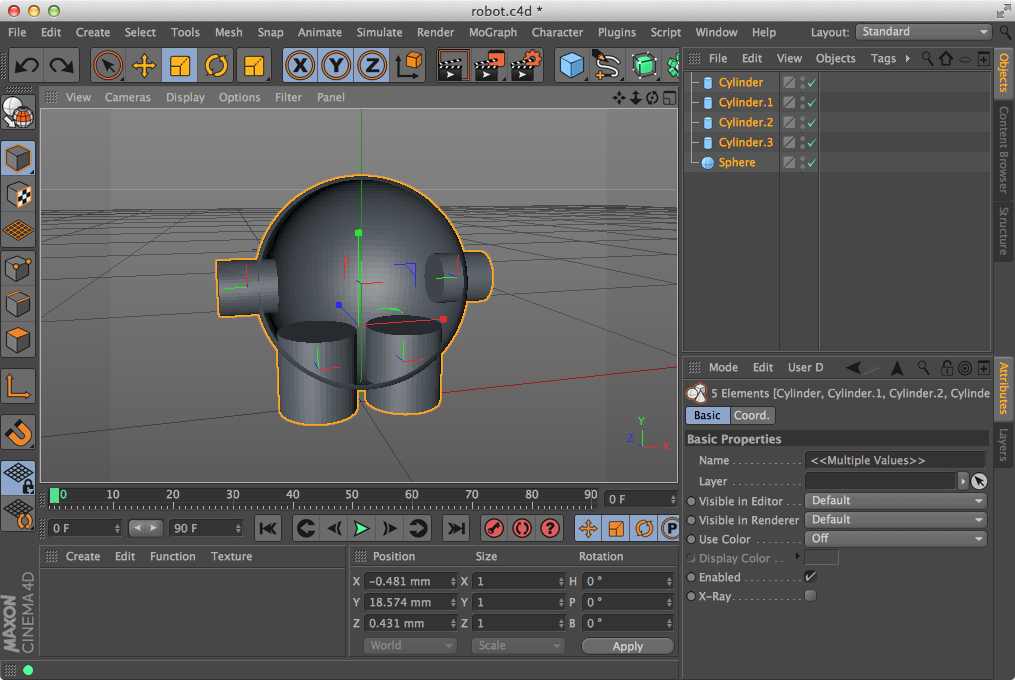 Buyers seeking quotes for parts are responsible for defining the specific requirements for those parts. Please refer to our terms and conditions for more information.
Buyers seeking quotes for parts are responsible for defining the specific requirements for those parts. Please refer to our terms and conditions for more information.
Team Xometry
This article was written by various Xometry contributors. Xometry is a leading resource on manufacturing with CNC machining, sheet metal fabrication, 3D printing, injection molding, urethane casting, and more.
top 12 programs for beginners
There are hundreds of different free 3D modeling software tools for beginners who want to create their own 3D models. Users can export their models and either 3D print them or post them online for others to download for free or for money.
These programs range from easy-to-use for beginners to professional ones that can take years to learn. That's why we've put together our list of the best free 3D modeling software to help you make your choice.
Some free online programs run entirely in the browser, while others need to be downloaded.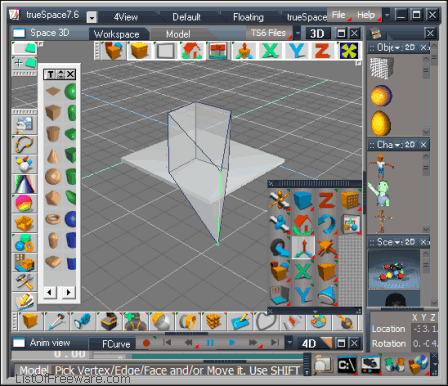 But they are all, at least in the short term, free.
But they are all, at least in the short term, free.
List of the best free 3D modeling software in 2021:
1. TinkerCAD is the best program for beginners
2. 3D Slash is a simple program for beginners
3. FreeCAD is free and open source
4. Sketch Up
5. Blender - Extended Freeware
6. MeshMixer
7 Fusion 360
8. Vectary
9.SelfCAD
10 BlocksCAD
11.OpenSCAD
12. Wings 3D
Criteria used for evaluation:
1. TinkerCAD is the best free software for beginners
The country of the developer is the USA. Available to work in the browser.
It is one of the many programs of the 3D CAD giant Autodesk, TinkerCAD. The tool looks deceptively primitive, easy to use, but again and again it makes it to the top of the best free programs.
TinkerCAD allows you to create detailed 3D models using basic shapes by joining them together.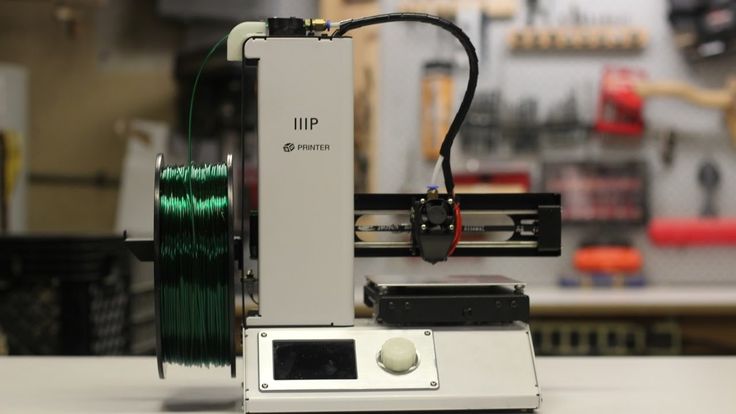 The learning process is much easier than in other programs. It is perfect for beginners and kids to teach kids how to 3D print. It is most often used in schools and classrooms around the world. You can get started in minutes in your browser without downloading. What's more, you can download the TinkerCAD app and play with the models on your smartphone or tablet!
The learning process is much easier than in other programs. It is perfect for beginners and kids to teach kids how to 3D print. It is most often used in schools and classrooms around the world. You can get started in minutes in your browser without downloading. What's more, you can download the TinkerCAD app and play with the models on your smartphone or tablet!
Autodesk produces many software products for various industries. TinkerCAD is perfect for beginners in 3D design to make something cool. You can export the model to STL and any other format and send it to a 3D printer. Once you gain the necessary experience, you may need a more sophisticated program such as AutoCAD. But at the same time, TinkerCAD remains a great program to start your career as a 3D designer.
2. 3D Slash is a simple free program for beginners
The basic version is free, the premium version costs $2 per month.
Ideal for beginners. 3D Slash is not like a regular program, more like a friendly, interactive 3D world where you can create whatever you want. The development team clearly thought out how to make the user interface as natural as possible, understandable to non-designers, without a complex learning process. The functionality is intuitive and convenient.
The development team clearly thought out how to make the user interface as natural as possible, understandable to non-designers, without a complex learning process. The functionality is intuitive and convenient.
At the same time, you are not limited to just basic shapes. You can create impressive and more complex objects. The standard version is free, the premium version comes with a small monthly fee. School and professional plans are also available.
3. FreeCAD is free and open source software
FreeCAD was released back in 2002, and while it's still in beta, it's progressed a lot. It is designed to make the process of creating 3D versions of real objects as efficient and simple as possible.
A very useful feature is the ability to start with a static 2D sketch, from which you can then build the final 3D model. FreeCAD works well on Windows and Mac, you can easily export the model as STL, OBJ or even DXF files, for example for CNC.
Although FreeCAD was developed primarily for machine tools, it can also be used for 3D printing. What's more, FreeCAD is open source, so you can work with Python.
FreeCAD is ideal for users with some design experience, as some of the tools can be difficult for beginners. But overall it is a very powerful free 3D modeling tool.
4. SketchUp
The basic version is free, the Pro version costs $299 per year. The country of the developer is the USA.
The program is a veteran of the 3D modeling software industry, created in 2000 by Lastsoftware. In 2006, Google bought it to implement this versatile and powerful tool in its services. It has since been sold to Trimble Inc., who have offered a free version. SketchUp is a great choice for beginner designers. It, like TinkerCAD, is easier to learn than most other 3D programs. Contains almost all the tools you might need.
While SketchUp is mostly used by architects, it is gaining more and more popularity in 3D printing.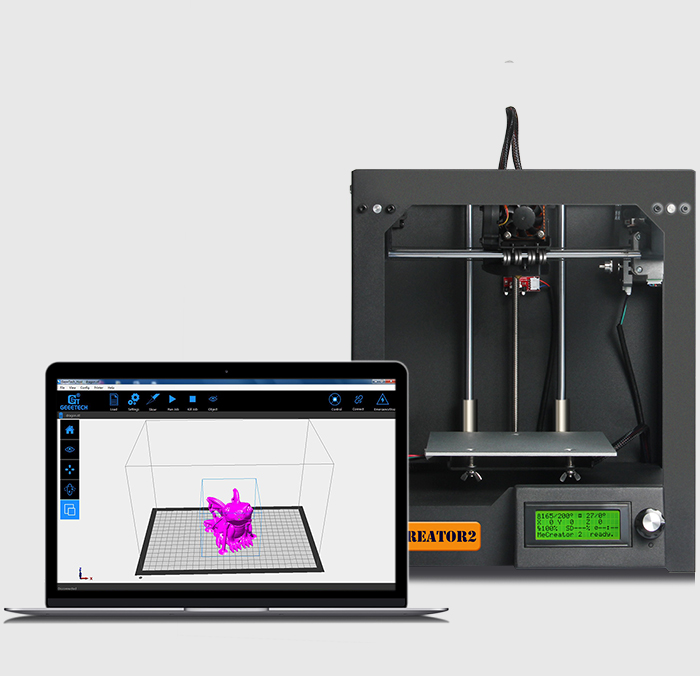 The tools are surprisingly well suited to 3D CAD file creators. You can download the SketchUp STL extension to create files in STL.
The tools are surprisingly well suited to 3D CAD file creators. You can download the SketchUp STL extension to create files in STL.
SketchUp has a simple interface that is not overloaded with information. You can easily figure it out in a few hours and create a very realistic 3D model on the first day.
5. Blender - extended free program
The country of the developer is the Netherlands.
Possibly the most popular 3D design software. Blender has a huge active community that shares its STL files and 3D models, as well as information on the web. A quick Google and YouTube search will turn up thousands of links where users showcase their 3D projects and share their Blender 3D experience. Such popularity is primarily due to the fact that the program is 100% free and open source. You can create almost anything in it. The choice of tools is huge.
The learning process is more complex than previous programs. However, thanks to its toolset, Blender is a versatile 3D modeling program.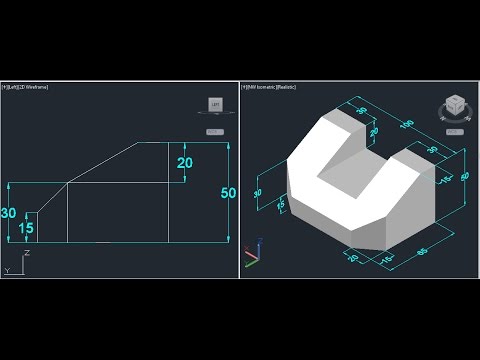 It is used in a variety of applications ranging from VFX for movies, video games, 3D model design to 3D printing. In addition, Blender comes with an integrated game engine as well as detailed modeling tools and video editing capabilities. This incredible free software is ideal for game developers and experienced 3D modelers.
It is used in a variety of applications ranging from VFX for movies, video games, 3D model design to 3D printing. In addition, Blender comes with an integrated game engine as well as detailed modeling tools and video editing capabilities. This incredible free software is ideal for game developers and experienced 3D modelers.
6. MeshMixer
The country of the developer is the USA.
Meshmixer is a unique program that doesn't fit into any particular category. Another development from Autodesk, Meshmixer sets itself apart from the competition in that it allows you to edit existing models using a variety of tools, including animation, buckle/fill, repair. Meshmixer is well suited for design modification and quality assurance. Useful for both beginners and experts. Allows you to improve and prepare your models for 3D printing.
Another important advantage of the program is the possibility of its use in topological optimization. With simple tools, parts can be made lighter and more economically. This is especially useful for subsequent 3D printing in industries such as aerospace and automotive, where the weight of the model is very important.
This is especially useful for subsequent 3D printing in industries such as aerospace and automotive, where the weight of the model is very important.
All in all, Meshmixer is a versatile option for those who need to improve their 3D model. Beginners can change their models, experts can optimize industrial designs.
7. Fusion 360
The program is free for personal use for a year, the Pro version costs about $500 per year.
The country of the developer is the USA.
Another Autodesk development for schools and academic institutions. It is undoubtedly a tool for experts, but easy enough to use for an educated beginner. Fusion 360 is a sharing program that allows you to share STL files via the cloud for collaborative editing and model optimization.
It has powerful tools for working on almost any industrial 3D design. It has built-in functions for estimating the load that the components of a 3D model will face. This allows designers to find potential weaknesses before printing. Once created, you can easily export the model to an STL file or any other format. The program has recently become free for students, startups, and more. If you have some experience or want to improve your 3D design skills, this 3D software is perfect.
This allows designers to find potential weaknesses before printing. Once created, you can easily export the model to an STL file or any other format. The program has recently become free for students, startups, and more. If you have some experience or want to improve your 3D design skills, this 3D software is perfect.
8. Vectary
Free program with premium features for $12 per month.
Vectary launched in 2014 and calls itself the most accessible 3D and AR design platform. This is a free web-based 3D modeling program. Vectary offers templates with pre-rendered and lit screens that you can place your 3D models in front of for product photography and other artistic purposes. A simple work interface with the necessary set of tools makes working with lighting and modeling easy. You can easily export your finished design or scene as an AR model.
The free package includes access to Vectary Studio for creating and designing models, as well as the ability to export your creations to OBJ or STL formats. For other formats, you will need an update. You can create up to 25 projects for free, as well as access a library of 3D assets, materials, and Vectary icons. A paid upgrade gives you access to AR preview tools, as well as project sharing features and teams for better and faster feedback between multiple people.
For other formats, you will need an update. You can create up to 25 projects for free, as well as access a library of 3D assets, materials, and Vectary icons. A paid upgrade gives you access to AR preview tools, as well as project sharing features and teams for better and faster feedback between multiple people.
9. SelfCAD
Free program for education. For the rest, it costs $4.99 per month.
The country of the developer is the USA.
SelfCAD focuses on being the best browser-based, no-download free 3D modeling software for students around the world. It is popular in American schools teaching 3D design to students. Simple and easy to use, requiring a short training period, SelfCAD has all the necessary tools for creating models. It also has slicing tools to prepare STL or G-code files for 3D printing.
SelfCAD is a simple 3D design program with a very clear interface, suitable for beginners.
10.
 BlocksCAD
BlocksCAD The program is provided free of charge. There are paid educational versions for schools.
The country of the developer is the USA.
BlocksCAD is learning-focused and was created for STEM students in grades 3 through 8. It is a cloud-based free 3D modeling software that promotes learning about mathematics, computational thinking, coding concepts, and designing models for 3D printing.
The free gallery has a wide selection of projects to use in personal and classroom work, ranging from snowmen, jewelry rings, fish, and even the infamous cafeteria. Works great with OpenSCAD, designed to be simple, fun and easy for kids to work with. 3D models can be created using colorful, easy-to-manage blocks and exported either as STL files or as files to be opened and edited in OpenSCAD. For beginners, BlocksCAD offers extensive tutorials on the basics of 3D modeling and how to use 3D software.
11. OpenSCAD
OpenSCAD is a free downloadable program.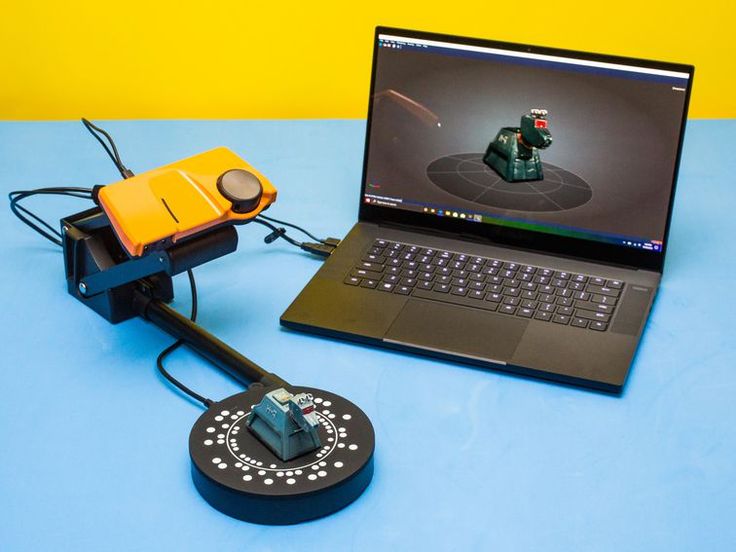 It looks intimidating, because it “envelops” with codes and scripts. This is a powerful tool. But keep in mind that it is for those who are used to coding. The program was created back in 2010 by Marius Kintel and Clifford Wolf. New updates and patches are released regularly. OpenSCAD is loved by 3D designers who prefer a scripted rather than an artistic design method. It is also worth noting that a 3D part in OpenSCAD can be created using only the mouse, but this is not the only feature of the program.
It looks intimidating, because it “envelops” with codes and scripts. This is a powerful tool. But keep in mind that it is for those who are used to coding. The program was created back in 2010 by Marius Kintel and Clifford Wolf. New updates and patches are released regularly. OpenSCAD is loved by 3D designers who prefer a scripted rather than an artistic design method. It is also worth noting that a 3D part in OpenSCAD can be created using only the mouse, but this is not the only feature of the program.
Overall, we are impressed with OpenSCAD: it offers something new and free. However, at least intermediate knowledge of scripting languages is required. Otherwise, it is better to use one of the other options from our list.
12. Wings 3D
Wings 3D is a completely open and free 3D modeling software that has been actively developed and improved since 2001. The program is not as modern and easy to use as Vectary or TinkerCAD, but works very well with characters, desktop models and other 3D modeling projects.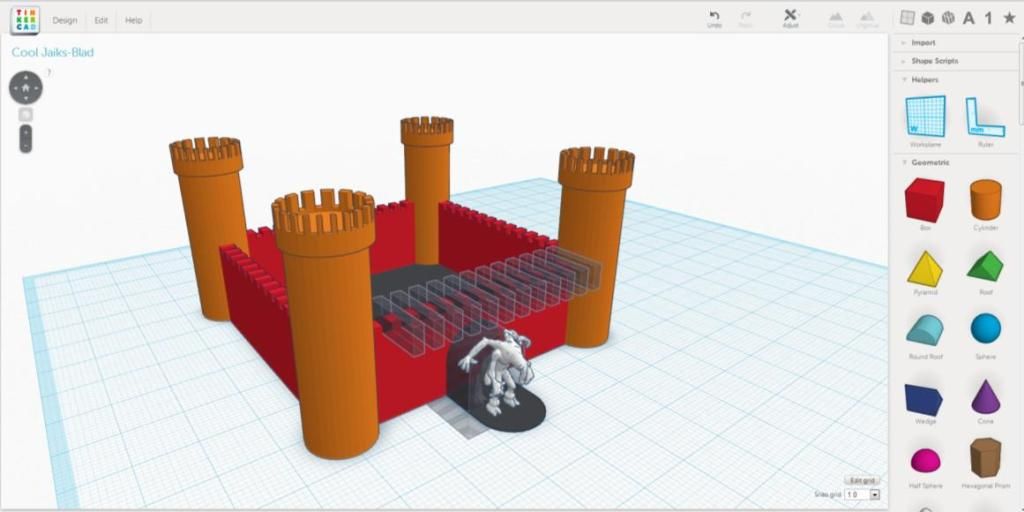 Pretty easy to work with model customization features like sculpting, joining, cutting, bending - simple even for beginners.
Pretty easy to work with model customization features like sculpting, joining, cutting, bending - simple even for beginners.
Each menu item is context-sensitive, so when you right-click, different options appear depending on what you might need. This advanced tool saves time and makes it a great 3D modeling tool for beginners and experts alike.
Translation from the 3DSourced site:
https://www.3dsourced.com/rankings/best-free-3d-software/
Top 20 free 3D printing and 3D printer software
Looking for 3D printing software? We've rounded up the top 20 software tools for beginners and professionals alike. Most slicers are free.
What is a slicer? This is a program for preparing a digital model for printing. Models for 3D printing are usually distributed in STL files. To turn an STL file into G-code (a language that a 3D printer understands), a slicer program is required. It is called a slicer because it cuts (to slice - English) a 3D model into many flat two-dimensional layers, from which a 3D printer will add a physical object.
It is called a slicer because it cuts (to slice - English) a 3D model into many flat two-dimensional layers, from which a 3D printer will add a physical object.
Which slicer should I choose? In this article, we will tell you which slicer is the best choice for 3D printing for each stage of your work. Which one is better for preparing a 3D model for printing? But what if you need to create a 3D model from scratch? And if you are only taking the first steps in 3D?
Don't be afraid: we've answered all of these questions, including the required skill level for each program and where you can download it. The great thing is that most of these programs are completely free and open source.
- Cura
- CraftWare
- 123D Catch
- 3D Slash
- TinkerCAD
- 3DTin
- Sculptris
- ViewSTL
- Netfabb Basic
- Repetier
- FreeCAD
- SketchUp
- 3D Tool
- Meshfix
- Simplify3D
- Slic3r
- Blender
- MeshLab
- Meshmixer
- OctoPrint
#1: Cura
For beginners who need a slicer to prepare STL files for 3D printing
Cura is the default slicer software for all Ultimaker 3D printers, but can be used with most others , including RepRap, Makerbot, Printrbot, Lulzbot and Witbox. The program is completely open source, its capabilities can be extended using plugins.
The program is completely open source, its capabilities can be extended using plugins.
This program is very easy to use and allows you to manage the most important 3D printing settings through a clear interface. Start in Basic mode to quickly get up to speed and change print quality settings. If finer control is required, switch to Expert mode.
Cura can also be used to directly control the printer, but then the printer and computer must be connected to each other.
Download: Cura
Price: Free
Systems: PC, Mac, Linux
#2: CraftWare
For beginners to prepare STL files for 3D printing 3D printers, by the Hungarian startup CraftUnique, to support its CraftBot crowdfunding machine. However, the program works with other printers.
Like Cura, CraftWare allows you to switch from "Easy" to "Expert" mode, depending on how confident you feel. It's a colorful app that features a visual G-code visualization with each function represented by a different color.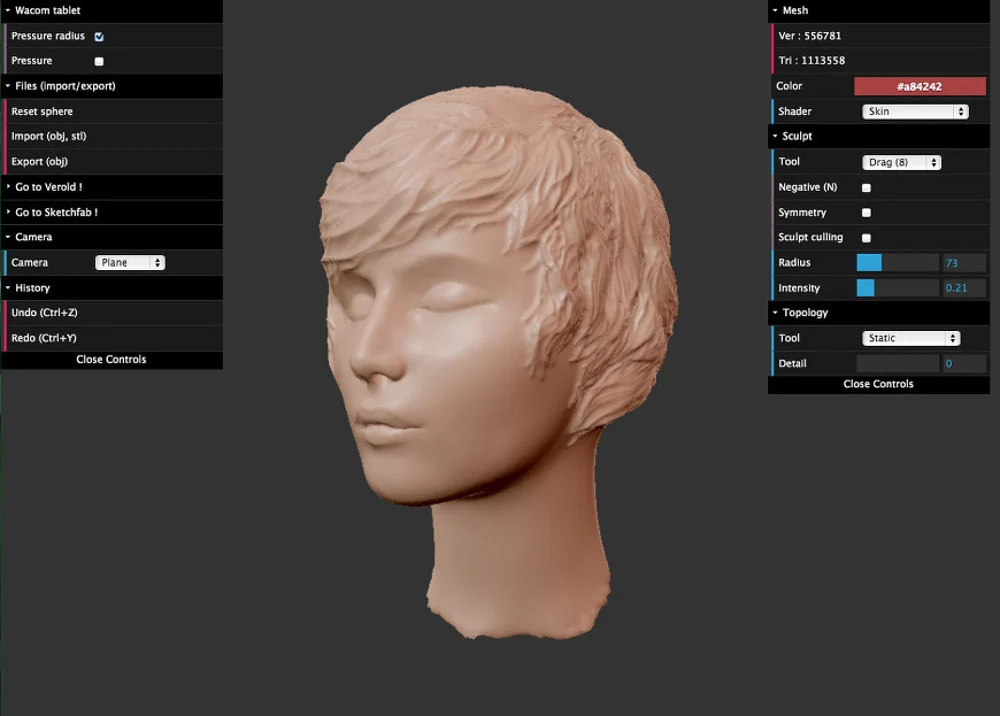 But the most outstanding feature is the individual support service. As far as we know, only the paid program Simplify3D has this.
But the most outstanding feature is the individual support service. As far as we know, only the paid program Simplify3D has this.
Please note, however, that this program is still in beta, so bugs may occur.
Download: CraftWare
Price: Free
Systems: PC, Mac
#3: 123D Catch
-systems, smartphones and tablets, which allows you to convert images of objects into a 3D model. Pictures can be taken with a smartphone/tablet or digital camera.
You need many photos of the object from different angles - the more the better - after which they will be compiled into a 3D model.
123D Catch is more of a fun app than a professional 3D printing tool, but after some tambourine dancing, you can get good results, especially when paired with an STL editor like MeshLab or Meshmixer.
Price: Free
Systems: PC, Android, iOS, Windows Phone
#4: 3D Slash
and surprisingly simple, and refreshingly new. With 3D Slash, you can design 3D models using your dice skills.
With 3D Slash, you can design 3D models using your dice skills.
You can start with a large block and, like a virtual sculptor, remove small cups from it with tools such as a hammer or drill, or start from empty space and build a model from cubes and other shapes. You can paint with flowers or use template pictures.
Other features worth mentioning are tools for creating logos and 3D text. The Logo Wizard imports an image and creates a 3D model, while the Text Wizard allows you to enter and format text, and then turn it into 3D.
Recommended!
Download: 3dslash.net
Price: Free
Systems: PC, Mac, Linux, Browser
#5: TinkerCAD
- A computer-aided design (CAD) system for 3D printing, which is a good starting point for beginners. Since its capabilities are limited compared to Blender, FreeCAD and SketchUp, many users switch to more powerful tools after some time.
As in 3D Slash, here you can build models from basic shapes.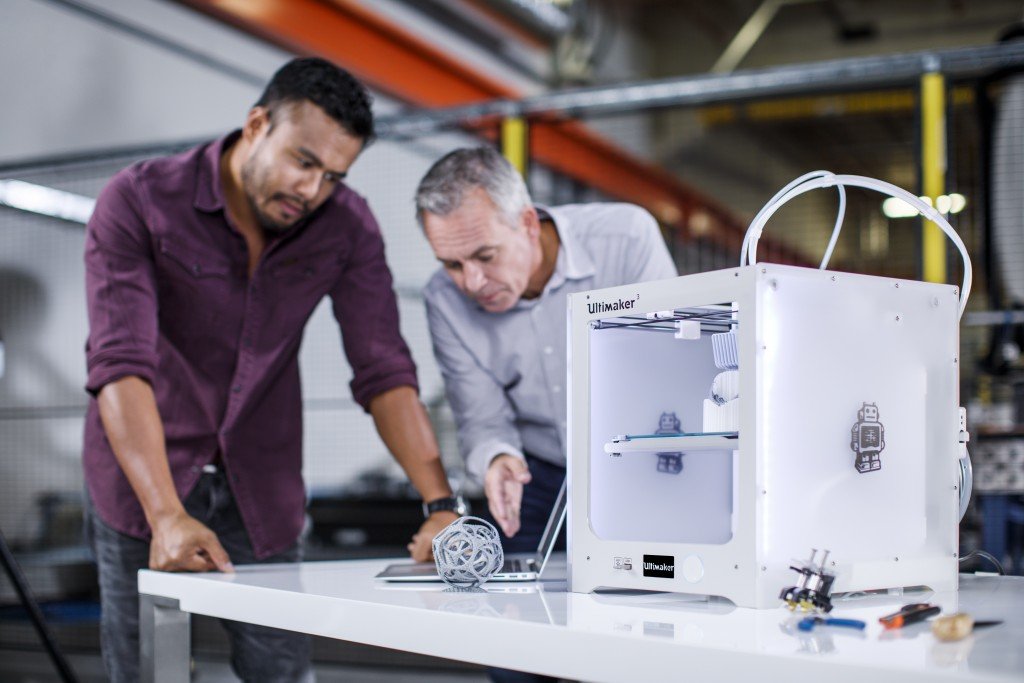 At the same time, unlike 3D Slash, TinkerCAD allows you to create vector shapes in 2D and convert them into three-dimensional models.
At the same time, unlike 3D Slash, TinkerCAD allows you to create vector shapes in 2D and convert them into three-dimensional models.
Come in: Autodesk TinkerCAD
Price: Free
Systems: Browser
#6: 3DTin
For beginners who want to create 3D printable models
another easy and intuitive online tool choice for beginners in 3D modeling. All you need is a Chrome or Firefox browser with WebGL enabled.
Choose from a huge library of 3D shapes and add them to your sketch. All sketches are stored in the cloud, access to them is free if you honor the Creative Commons license. Everything can be exported to STL or OBJ formats.
Enter: 3DTin
Price: Free
Systems: Browser
#7: Sculptris
For beginners who want to create 3D printable models
clay. This is a fantastic 3D modeling program if figurines are your main task. For example, you can make a bust of your favorite video game or comic book character. Sculptris is completely free and bills itself as a stepping stone to the more complex (and expensive) ZBrush tool.
Sculptris is completely free and bills itself as a stepping stone to the more complex (and expensive) ZBrush tool.
Download: Pixologic Sculptris
Price: Free
Systems: PC, Mac
#8: ViewSTL
For beginners who want to view STL files
ViewSTL is the easiest way to view STL files . Simply open a web page and drag the STL onto the dotted box.
The STL online viewer allows you to display the model in one of three views: flat shading (for a quick view), smooth shading (for a high-quality image), and wireframe.
Enter: ViewSTL
Price: Free
Systems: Browser
#9: Netfabb Basic
some nice features that allow you to analyze, "repair" and edit STL files before moving on to the model cutting stage.
A good choice if you need more than just a slicer and want to be able to quickly fix STL files without having to learn programs like MeshLab or Meshmixer.
Don't let the 'Basic' in the name fool you, Netfabb Basic is actually a very powerful 3D printing tool. It's "basic" only in the sense that it doesn't cost €1,500 like Netfabb Professional!
It's "basic" only in the sense that it doesn't cost €1,500 like Netfabb Professional!
Download: netfabb.de
Price: Free
Systems: PC, Mac, Linux
No. 10: Repetier
For advanced to prepare STL files for 3D printing
9002 the next level of 3D printer slicer software, but if you want to stay open source, you should look into Repetier. It is the great grandfather of 3D printing software and a favorite of the RepRap community.Today the program is moving by leaps and bounds from the level for beginners to advanced users. Packaged in an all-in-one configuration, it supports up to 16 extruders, multi-slicing via plug-ins, and virtually every fusing 3D printer on the market. Get ready to tinker!
What's more, Repetier Host works remotely via Repetier Server, so that the 3D printer can be controlled via a browser, tablet or smartphone.
Download: Repetier
Price: Free
Systems: PC, Mac, Linux
#11: FreeCAD
The program is a great option for developing your design skills. More technically, this parametric 3D modeling program allows you to easily change the project by rolling back through the history of the model and editing the parameters.
More technically, this parametric 3D modeling program allows you to easily change the project by rolling back through the history of the model and editing the parameters.
Download: freecadweb.org
Price: Free
Systems: PC, Mac, Linux
#12: SketchUp
For beginners who want to create 3D printable models
SketchUp is the perfect combination of simplicity and SketchUp functionality, with a user-friendly interface and a relatively flat learning curve (i.e., as experience grows with the time spent), the ideal program for developing three-dimensional models.
The Make SketchUp version is free and will have everything you need for 3D modeling if you also download and install the free STL exporter. There is also a professional edition for architects, interior designers and engineers.
Download: sketchup.com
Price: Free (SketchUp Make), $695 (SketchUp Pro)
Systems: PC, Mac, Linux
#13: 3D-Tool Free Viewer
view and check STL files
3D-Tool Free Viewer is a sophisticated tool that, among other things, allows you to check the structural integrity and printability of your file. With the Cross-Section function, for example, you can look at the model from the inside and check the wall thickness. Very useful if you want to check your STL file for killer errors before printing.
With the Cross-Section function, for example, you can look at the model from the inside and check the wall thickness. Very useful if you want to check your STL file for killer errors before printing.
Download: 3D-Tool
Price: Free
Systems: PC
#14: Meshfix
your model for errors.
Price: Free
Systems: Browser
#15: Simplify3D
For professionals to prepare STL files for 3D printing print. A flexible algorithm checks the model for problems, fixes them, shows a preview of the printing process (ideal for identifying potential problems), and then slices it.
This slicer offers the best infill pattern options in the competition. For models that require supports, Simplify3D will create the appropriate structures on its own and give you full control over their placement. For printers with a dual extruder, when printing with different materials, the Dual Extrusion wizard will help, as a result of which, for example, it will be easier to remove the dissolving filament.
Simplify3D supports 90% of today's commercially available desktop 3D printers and is compatible with Marlin, Sprinter, Repetier, XYZprinting, FlashForge, Sailfish and MakerBot firmware. Simplify3D can also be used to directly control the printer, but then the printer and computer must be connected to each other.
Download: simplify3d.com
Price: $149
Systems: PC, Mac, Linux
#16: Slic3r
source code, which has a reputation as a carrier of super new functionality, which you will not find anywhere else. The current version of the program is able to show the model from multiple angles, so that the user gets a better preview experience.
There's also an incredible 3D honeycomb infill, the first of its kind that can extend over multiple layers rather than repeating itself like a stamp. This significantly increases the strength of the internal filling of the model and the final printout.
Another option is direct integration with Octoprint.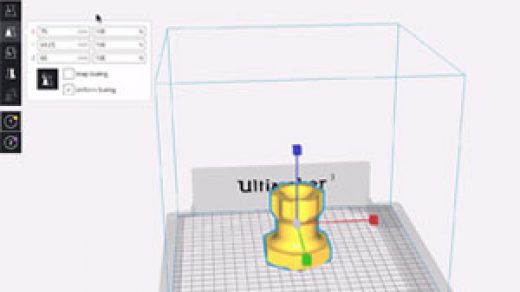 Once the files on the user's desktop are sliced, they can be directly uploaded to Octoprint with one click.
Once the files on the user's desktop are sliced, they can be directly uploaded to Octoprint with one click.
Download: Slic3r
Price: Free
Systems: PC, Mac, Linux
#17: Blender
For professionals who want to create 3D printable models
Blender is a popular computer-aided design (CAD) system with a steep learning curve. Not at all the best choice for beginners, but what you need if you are quite experienced and need something more complex for modeling and printing.
In short, Blender is one of the most powerful tools in existence. Its community is always ready to help, there are a lot of educational materials. It's also open source, so enthusiasts often write extensions to make it even better and more powerful.
Download: blender.org
Price: Free
Systems: PC, Mac, Linux
#18: MeshLab
For professionals to prepare STL files for 3D printing
MeshLab - advanced editor.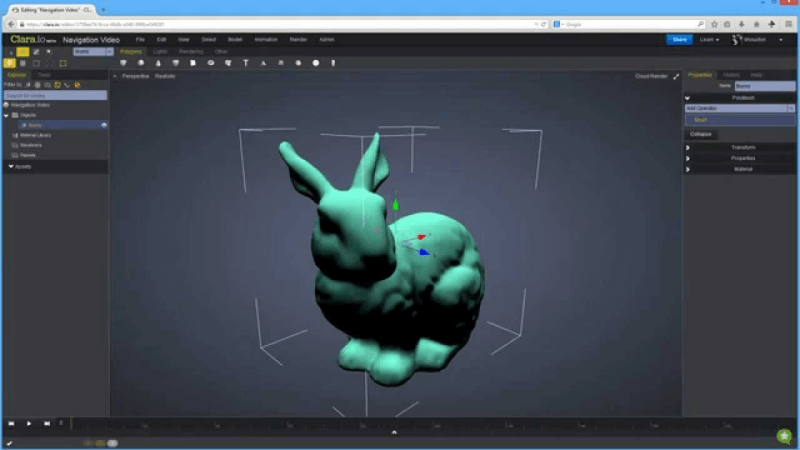 It allows you to remove parts of a 3D model, merge two models into one, patch holes. If you need a program to modify models for 3D printing or some kind of "repair" work, MeshLab is the right choice.
It allows you to remove parts of a 3D model, merge two models into one, patch holes. If you need a program to modify models for 3D printing or some kind of "repair" work, MeshLab is the right choice.
Price: Free
Systems: PC, Mac, Linux
#19: Meshmixer
For professionals to prepare STL files for 3D printing files. It's especially good for identifying potential problems and fixing them automatically. For example, it will show paper-thin walls that can lead to problems with 3D printing. Meshmixer is part of the Autodesk family of 3D printer software, so it should work well with tools like TinkerCAD.
Price: Free
Systems: PC, Mac
#20: OctoPrint
start, pause or interrupt 3D print jobs. Combined with Wi-Fi capable devices, it makes for a great monitor for remotely monitoring the 3D printing process.
Octoprint understands the G-codes of almost all 3D printers and slicers and includes a gCodeVisualizer to visualize this code before or during printing.


